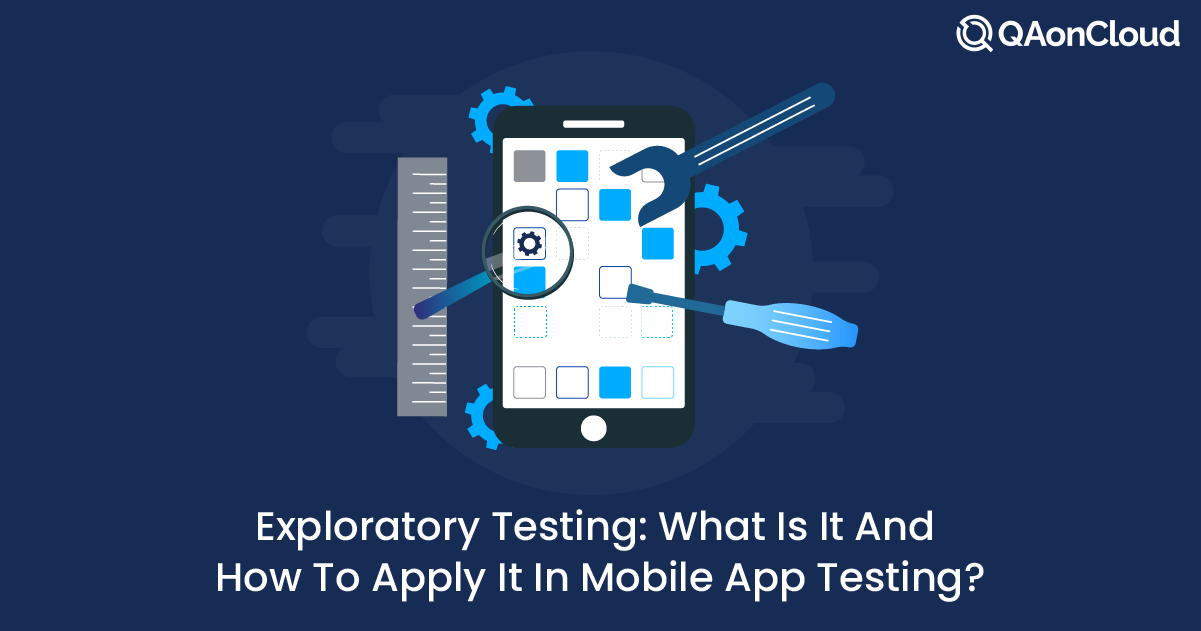In software testing, many different approaches and techniques can be used to ensure the quality and functionality of a software application. One such approach is exploratory testing, which involves simultaneous learning, test design, and execution. This blog will explore what exploratory testing is, how it can be applied in mobile app testing, its advantages, and various techniques.
What is Exploratory Testing?
Exploratory testing is an approach to software testing that emphasizes the tester’s freedom and creativity that involves exploring the application, learning its functionalities, and designing test cases simultaneously. It can be performed without pre-written test cases, instead relying on the tester’s experience, intuition, and knowledge to guide the testing process. This approach is often used when the application’s requirements are unclear or ambiguous or when a quick feedback loop is necessary.
Need for Exploratory Testing of Mobile Apps
Mobile app testing requires special considerations due to the unique features of mobile devices, such as touchscreens, location sensors, and camera integration. Conducting Exploratory testing with mobile app testing can be beneficial in identifying errors before they hit production. It allows testers to identify unexpected behaviour, user interface issues, and performance issues that can be hard to detect using traditional testing methods.
Advantages of Exploratory Testing
Exploratory testing is an essential approach for testing mobile apps for several reasons:
- Uncovering unexpected issues: Exploratory testing in the agile environment allows testers to explore the app in a more flexible and open-ended way. This can help uncover unexpected issues or defects that we might have missed before.
- Adapting to changes: Mobile apps are constantly evolving, with frequent updates and changes to their codebase. Exploratory testing allows testers to adapt to these changes and ensure that the app continues functioning as expected, even as changes are made.
- Testing usability: By exploring the app more naturally and intuitively, testers can identify usability issues that might not be apparent through scripted testing approaches.
- Saving time and effort: Exploratory testing can be more efficient and cost-effective than scripted testing approaches, as it allows testers to focus their efforts on the most essential areas of the app and adapt their testing strategies as needed.
- Improving test coverage: Exploratory testing can help improve test coverage by exploring the app more open-ended way and identifying potential issues or defects that existing test cases might not cover.
Steps to Perform Exploratory testing of mobile apps:
1. Define the scope: The first step is to define the scope of the testing, such as the operating systems, device types, and versions of the mobile app that will be tested. Exploratory testing tool comparison will help us to select the best exploratory testing tools that serve the purpose based on the client’s requirements..
2. Identify the risks: Identify the potential risks associated with the mobile app, such as security, performance, and usability issues.
3. Create test scenarios: Based on the risks, create test scenarios that simulate real-world usage scenarios. For example, testing the app’s functionality in different network conditions, testing user flows, or testing the app with different types of data.
4. Test the app: Start testing the app using the created scenarios. During the testing, observe the app’s behaviour and note any issues, such as crashes, unexpected behaviour, or performance issues.
5. Log defects: Log any defects found during the testing process and prioritize them based on their severity.
6. Report findings: After testing, compile a report of the testing findings and share them with the development team.
7. Retest: If any defects are fixed, retest the app to ensure the issues have been resolved, and the app is functioning as expected.
8. Iterate: Repeat the process with new test scenarios or areas of focus until the mobile app is thoroughly tested and ready for release.
It is important to remember that exploratory testing is a dynamic process, and the steps listed above may vary based on the app and testing objectives.
Types of Exploratory Testing:
Several types of exploratory testing can be performed on mobile apps like Functional Testing, Usability Testing, Compatibility Testing, Security Testing, Performance Testing, and Localization Testing etc.,
These are just a few exploratory testing examples that can be performed on mobile apps. The specific types of testing will depend on the app’s functionality, intended use, and target audience.
Exploratory Testing Techniques:
Here are the different exploratory mobile app testing techniques that a tester can conduct:
- Session-based testing: In session-based testing, the tester performs testing within a specific time frame, focusing on a particular aspect or area of the app. The tester can use checklists or mind maps to ensure they cover all aspects of the app during the session.
- Error guessing: Error guessing involves using the tester’s intuition and experience to identify potential errors in the app. Testers can use various methods to guess potential errors, such as trying to perform actions likely to cause crashes or using the app unexpectedly.
- Boundary testing: In boundary testing, testers focus on testing the boundaries of the app’s functionality. For example, testing the app’s limits when handling large amounts of data or testing the app’s behaviour when the device’s storage is whole.
- Exploratory regression testing: Exploratory regression testing involves testing the app after making changes to the code to identify any unexpected changes or regressions in the app’s behaviour. Testers can use session-based testing, error guessing, or other techniques to perform exploratory regression testing.
- Random testing: In random testing, testers randomly select features or areas of the app to test. This technique can be helpful in identifying unexpected issues or defects that might not be uncovered through other testing techniques.
It’s important to note that these techniques are not mutually exclusive and can be combined as needed to create an effective exploratory testing strategy for mobile apps. The key is to be flexible and creative in your testing approach to uncover potential issues and defects in the app.
Final Wrap-up:
Exploratory testing is an essential approach for testing mobile apps that allows testers to adapt to changes, uncover unexpected issues, test usability, save time and effort, and improve test coverage. Startups should consider incorporating exploratory testing into their mobile app testing strategy. It can be more efficient and cost-effective than scripted testing approaches and help identify issues or defects that might not be apparent through other testing methods. By adopting exploratory testing, startups can ensure that their mobile apps are functioning as intended, providing a positive user experience and ultimately contributing to the success of their business.

